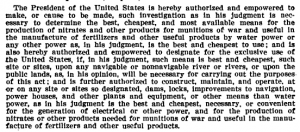The following was written by a guest author who wishes to be known only as The Mysterious Man from Rose Hill. We’ve decided to name this huge underground cave “The Airplane Room” in memory of his father.
This is a story that was told to me by my father when I was 8 to 10 years old in the late 50’s. It was an exciting story for a young boy and I still have vivid memories of him telling it.
Please understand that everything I’m relating is hearsay as I have no way to verify or corroborate the account. My father was a very truthful person. In fact he would often admonish me as a child to never exaggerate or embellish a story. “If you stretch the facts, then no one will believe you when you do tell the truth,” he said.
Following is a recounting of the story as told by my father, as I remember it:
The setting is in Cumberland Gap, Tennessee where my father lived with his family. The time is the early 40’s. It was the war years, and my Dad was in his early teens.
One night, Dad and two of his friends decided to go exploring in Gap Cave, known at that time as Cudjo’s Cave. Arriving late at night, after everyone had gone home, they entered the cave and began their exploration to see how far they could travel inside the cave. After making their way through rough terrain, narrow passages, small openings, mud and water for nearly half the night, they were surprised to enter a huge room much larger than anything they could have imagined.
“We were so excited to have made this amazing discovery,” Dad said, “And to think we were the first people to see it.”
I said, “Dad, how did you know that you were the first people to discover it? How did you know no one else had been there?”
He said, “Well, when we first went in that big room, there was water dripping everywhere. The water had puddled on the floor, and on top of the water, minerals had hardened like a thin sheet of ice on a pond. Where we walked, we broke through the crystal, just like breaking though thin ice, and it left our footprints visible. When we first went in, there were no other footprints, so we knew we were the first.
“Dad,” I said, excited, “just how big was this room? How many feet across?!”
“I don’t know exactly,” he said, “we didn’t have anything to measure with, but I know how big a football field is, and you could put several in it.”
“How many?” I asked.
“Well, several, ” he said.
“Dad, could you see all the way across from one side to the other? Was the ceiling high enough to see the walls all the way around?”
“Oh yeah, he said, “it had a high ceiling.”
“How high would you estimate?”
He said, “Well, it was high enough that you could fly an airplane around in it!”
“Dad,” I asked, “could you fly a passenger plane in it?”
“I don’t know about that,” he said, “but there’s plenty of room to fly a small two-seater plane around inside!”
“Could a small plane take off in that room?” I asked.
“No,” he explained, “the floor is not smooth enough. There are big boulders strewn across the floor. We thought that, in time, there must have been an earthquake and part of the ceiling must have fallen.”
“Do you think that room might ever be open to the public?”
“I doubt it,” he said. “It’s too far back in the mountain and too hard to access. Some of the openings are very small.”
“How long were you there exploring?”
“Not too long,” he replied. “It was a long trek to get there, and we had to be out before morning.”
“Dad,” I asked, “did you carve your names and a date, so people would know you were there?”
“No, he said, “we didn’t do that.”
“Dad, if I ever had a chance to explore that cave, is there any way I could know you were there?”
“Well…” he thought, “we did leave one thing behind. We noticed how heavily everything was mineralized, and we wondered how long it would take for the mineralization to occur. We left a coke bottle under a dripping stalactite thinking that we might come back some day.”
“Dad, how did you get inside the cave?”
“Well,” he said, “there are several ways to get in, but that’s a story for another time, and I have a hard day tomorrow. It’s bedtime and we’d better turn in.”
